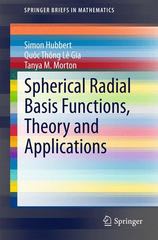Question
1. When constructing a confidence interval, the confidence level is A. the standard deviation of the sampling distribution. B. another name for the margin of
1. When constructing a confidence interval, the confidence level is
A. the standard deviation of the sampling distribution. B. another name for the margin of error. C. a measure of your personal confidence that you engaged in the correct calculations. D. the probability the interval will capture the true parameter value in repeated samples. E. the probability the sample statistic is in your computed interval.
2. What three things affect the size of the margin of error when constructing a confidence interval for the population proportion?
A. Amount of nonresponse error, the sample size, and the population proportion B. The sample size, the population proportion, and the confidence level C. The sample proportion, the confidence level, and the sample size D. The confidence level, the population size, and the population proportion E. The population size, the sample proportion, and the confidence level
3. A random sample consisting of 450 high school students is surveyed about their plans for college, and 297 of these students indicate that they plan to apply to a college. If the goal is to use this information to estimate p, or the proportion of all high school students who plan to apply to a college, we'd call p a _________________.
A. statistic B. parameter C. standard deviation D. margin of error E. confidence level
4. Return to Question 3. Since 297 out of the random sample of 450 high school students indicated that they were planning to apply to a college, we'd call the resulting proportion of 0.66 a _________________.
A. statistic B. parameter C. standard deviation D. margin of error E. confidence level
5. What proportion of adults read for pleasure on a regular basis? An educational psychologist surveys a random sample of 347 adults, and 64 of these adults report reading for pleasure on a regular basis. Use this information to construct a 95% confidence interval in order to estimate the population proportion of adults who read for pleasure on a regular basis. As you construct the interval, round your sample proportion and margin of error to three decimal places as you are engaging in calculations, and choose the answer below that is closest to what you calculate.
A. 0.130 to 0.238 B. 0.089 to 0.279 C. 0.182 to 0.186 D. 0.163 to 0.205 E. 0.143 to 0.225
6. You want to estimate the proportion of students at OSU who have Netflix accounts. You select a random sample of 775 OSU students and find that 618 of these students have Netflix accounts. If you want to construct a 90% confidence interval, what will the margin of error be? As you construct the interval, round your sample proportion and margin of error to three decimal places as you are engaging in calculations, and choose the answer that is closest to what you calculate. A. 0.01 or smaller B. 0.024 C. 0.036 D. 0.055 E. 0.075 or larger
7. A dental insurance company is interested in determining the percentage of adults who visit the dentist on a yearly basis. Based on a survey of a random sample of adults, the insurance company reports a sample percentage of 32%, with a margin of error of 2.1%. How should this margin of error be interpreted?
A. With a certain level of confidence, the interval from 29.9% to 34.1% includes the percentage of adults in the population who visit the dentist on a yearly basis. B. With a certain level of confidence, the interval from 29.9% to 34.1% includes the percentage of adults in the sample who visit the dentist on a yearly basis. C. In the sample, 2.1% of the adults who were surveyed lied about their visits to the dentist. D. Only 2.1% of the population was included in the sample. E. There is a 2.1% chance a mistake was made when data was gathered from this particular sample.
8. The critical value, or z*, that is used to construct a confidence interval for a proportion depends upon
A. the sample size. B. the confidence level. C. the sample size and the confidence level. D. the sample size and the sample proportion. E. the sample size, the confidence level, and the sample proportion.
9. Where do adults get their news from? A recent report describes the results of a survey of a random sample of adults. According to the report, "we are 95% confident that between 21.6% and 24.4% of all adults get their news from podcasts." What exactly does the phrase "95% confident" mean?
A. 95% of all adults listen to podcasts between 21.6% to 24.4% of the time. B. We are 95% confident the interval from 21.6% to 24.4% includes the sample percentage of adults who get their news from podcasts. C. There is a 5% chance a mistake was made when examining the results of the survey. D. The interval from 21.6% to 24.4% was constructed using a method that gets things right 95% of the time. E. 21.6% to 24.4% of all adults will listen to podcasts 95% of the time.
10. The _________________ determines the width of the confidence interval and the ___________________ determines the center of the confidence interval.
A. sample statistic; population parameter B. margin of error; sample statistic C. population parameter; sample statistic D. population parameter; margin of error E. sample statistic; margin of error
Step by Step Solution
There are 3 Steps involved in it
Step: 1

Get Instant Access to Expert-Tailored Solutions
See step-by-step solutions with expert insights and AI powered tools for academic success
Step: 2

Step: 3

Ace Your Homework with AI
Get the answers you need in no time with our AI-driven, step-by-step assistance
Get Started


